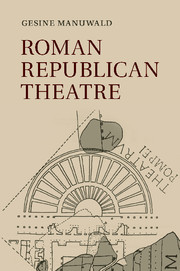2 - Production and reception
Published online by Cambridge University Press: 05 July 2011
Summary
FESTIVALS AND DRAMATIC PERFORMANCES
In Republican Rome dramatic performances constituted ludi scaenici, which were one element of officially organized festivals. Consequently, opportunities for dramatic performances were closely linked to the development of Roman festival culture. This connection affected the status and the perception of drama: on the one hand there was the chance to reach a broad audience, on the other hand plays had to find their place in relation to other entertainments.
Festivals at Rome can be divided into regular games, typically in honour of a particular god and held at specific times throughout the year, and occasional spectacles due to extraordinary events. Ludi sollemnes were held regularly by the civic authorities, whereas munera were essentially donated spectacles by wealthy families, given, for instance, as fulfilments of vows after military victories (ludi magni/votivi), at dedications of temples (ludi ob dedicationem aedis) or at funerals in honour of the dead (ludi funebres).
All types of festivals could consist of various elements, including ‘scenic/stage/dramatic games’ (ludi scaenici) as well as ‘circus games’ (ludi circenses), such as chariot races, boxing, wrestling, foot-races and wild-beast hunts in the Circus Maximus (cf. e.g. Cic. Leg. 2.38; Liv. 33.25.1; 40.52.3; 42.10.5). The entire event started with a procession of the organizing magistrates, priests, contestants, actors, dancers, musicians, religious equipment and statues of the gods to the festival ground (pompa circensis) and with sacrifices performed by priests and magistrates (cf. Dion. Hal. Ant. Rom. 7.72; Tert. De spect. 7.2).
- Type
- Chapter
- Information
- Roman Republican Theatre , pp. 41 - 126Publisher: Cambridge University PressPrint publication year: 2011



